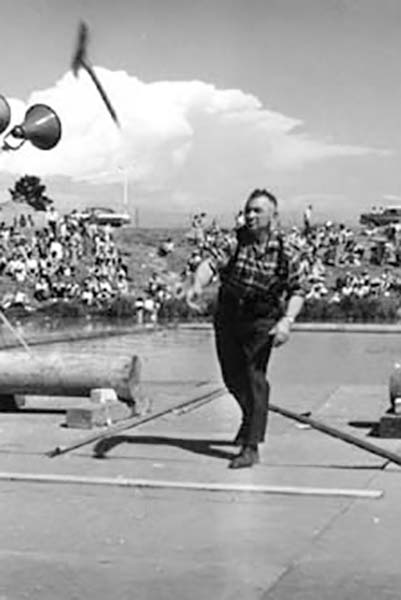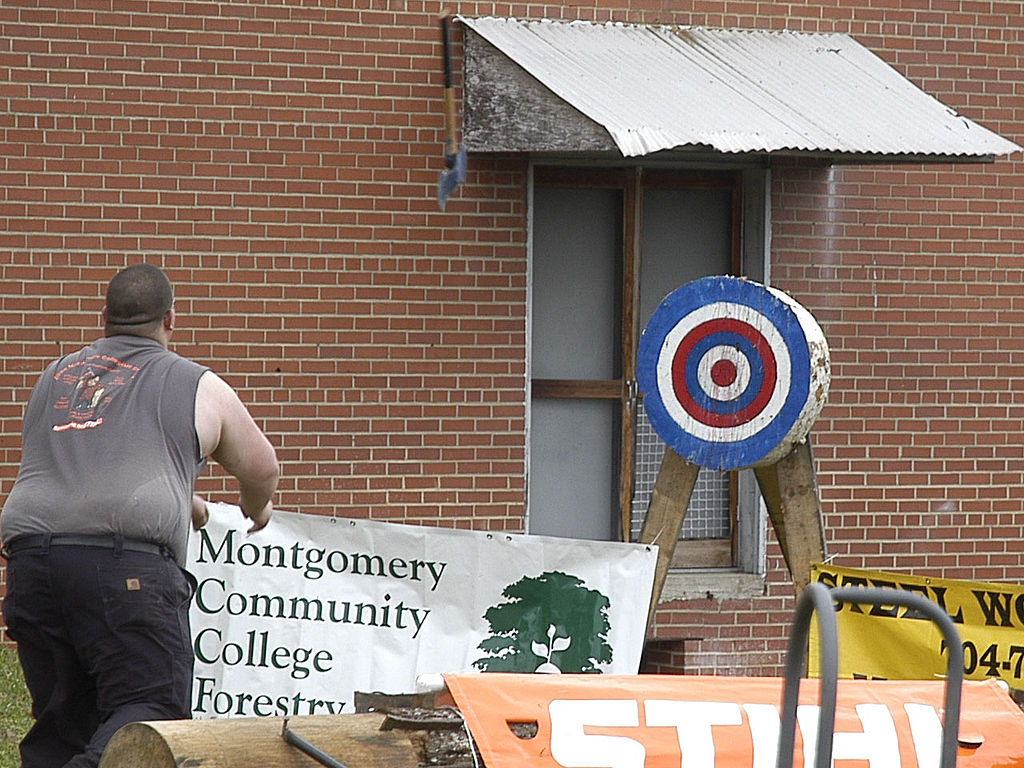Axe throwing is a sport in which the competitor throws an axe at a target, attempting to hit the bulls eye as near as possible. Axe throwing is an event in most lumberjack competitions. Today there are commercial locations in Canada, the United States, and the United Kingdom where participants can compete, similar to dart throwing, as well as opportunities at festivals and some theme parks.
Axe Throwing
History
The history of axe throwing is a fascinating subject. Throughout history axes have been popular as both a tool and a weapon due to the cheapness of their make.
Axes are some of the oldest tools known to man. They were common in the stone age. Initially they were made without a handle (or haft) and the cutting edge was made from stone.
They were quickly turned into weapons. However, thrown axes were not used until 400-500 AD.
The Francisca axe is probably the most famous types of throwing axes. It was used in the early middle age as a weapon. Commonly associated with the Franks, for whom it was the national weapon, it was also used by many of the other Germanic Tribes at the time.
Some historians believe that the thrown axe was not actually used in battles. They believe it would be folly to throw away a prized weapon and then be unarmed in the face of their enemies. Instead, they believe that it was used in the hunting of food. It was difficult to get within an arm’s length of an animal so thrown weapons were often used.


Rules
The target is thirty-six inches wide, consisting of five rings that are each four inches wide. The outside ring is worth one point, the next one in is worth two, then three, then four and finally the bullseye is worth five points. The distance of the throwing line to the target should be 6.1 meters or 21 feet, but at least one association conducts competitions from 15 and 30-foot distances. The axe is scored for the value of the outer most ring that it is touching. Each player gets five throws in a game for a maximum score of 25. The thrower must not step over the throwing line before the axe hits or misses the target; a thrower who steps over the line gets 0 points. Before the competition, a special target for practice throws must be made available. Throwers practicing on the competition target will be disqualified from the competition.

Cautions
The sport of axe throwing deals with a potentially dangerous weapon, so the throwing area must be kept safe at all times. If there is an open area behind the target, then spectators and others should be plainly prevented from walking into said area. The target area should be taped off using flags or light fencing materials. A first aid kit and a person trained in first aid and CPR should be at hand in the event of an emergency. For competition in rural and remote areas, the GPS location for the event should be reported in the case of First-Responders being needed.
Associations
World Axe Throwing League
The World Axe Throwing League (WATL) is the largest professional association for axe throwing in the world and the global governing body & league for the sport of axe throwing. With 41 members in 9 countries, WATL is responsible for the organization of axe throwing’s major international tournaments, notably the World Axe Throwing Championship.
National Axe Throwing Federation
The National Axe Throwing Federation (NATF) is an organization with a global membership that seeks to establish standardized rules for the sport of axe throwing. Throwers in NATF sanctioned leagues compete in the National Axe Throwing Championship to award an annual winner of the Wilson Cup.






